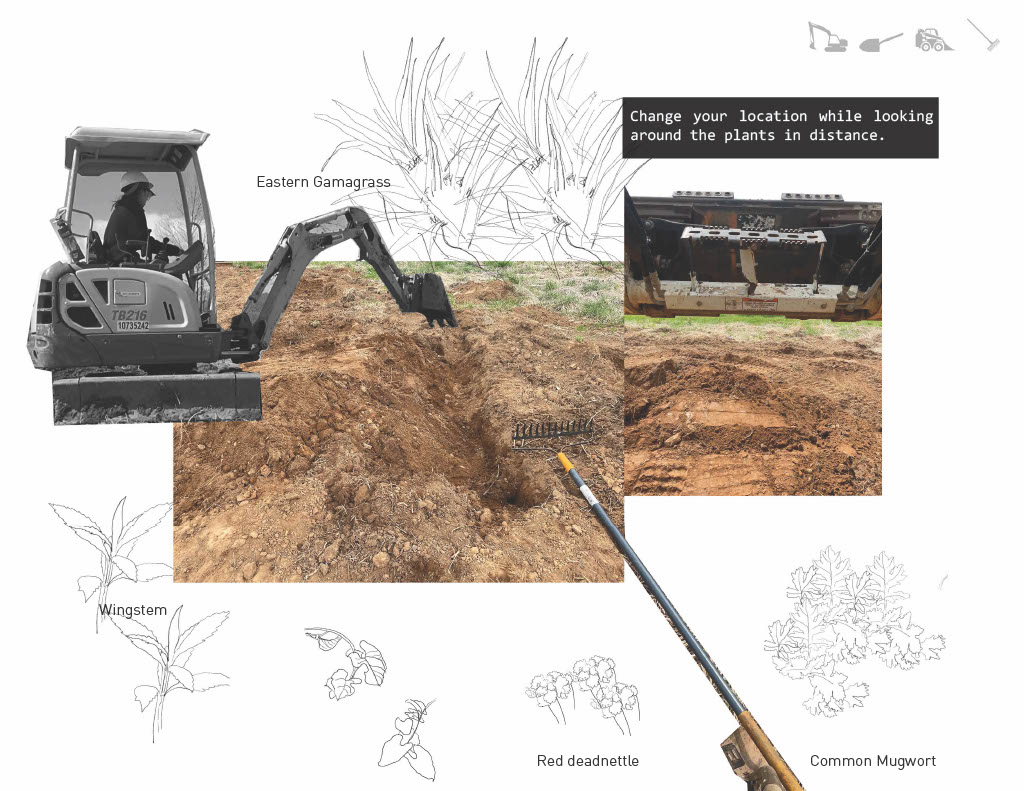Dina Luo
With no built structures at Milton, the sky, the soil and various plant communities constitute the space where we walk through and everything that we may observe. When traversing in and out of various plant communities, the ideas of “space” and “spatial feeling” are constantly switching from micro to macro.
The disturbance, either natural or artificial on site, could be interpreted as attractive or unappealing depending on the viewer’s aesthetic reaction. The sudden inconsistency stands out while we view the surroundings as a continuous landscape; Or it blends in as the scale and proximity to the present might be too distant.
Since the visual effect and continuous reactions created by the surrounding environment are influencing the human body’s senses, the definition of space experience is different for everyone. I want to bring in another perspective of viewing the landscape by extracting or inserting elements on site. The distinguished disturbances are implemented with plain geometries which are obviously human. Each site creates its own “room” compared with the larger “wilderness” in Milton. With such artificial arrangements, the characteristics of the site and plants are revealed in a more accessible way for the human body to move through and make concentration to the human eye.









